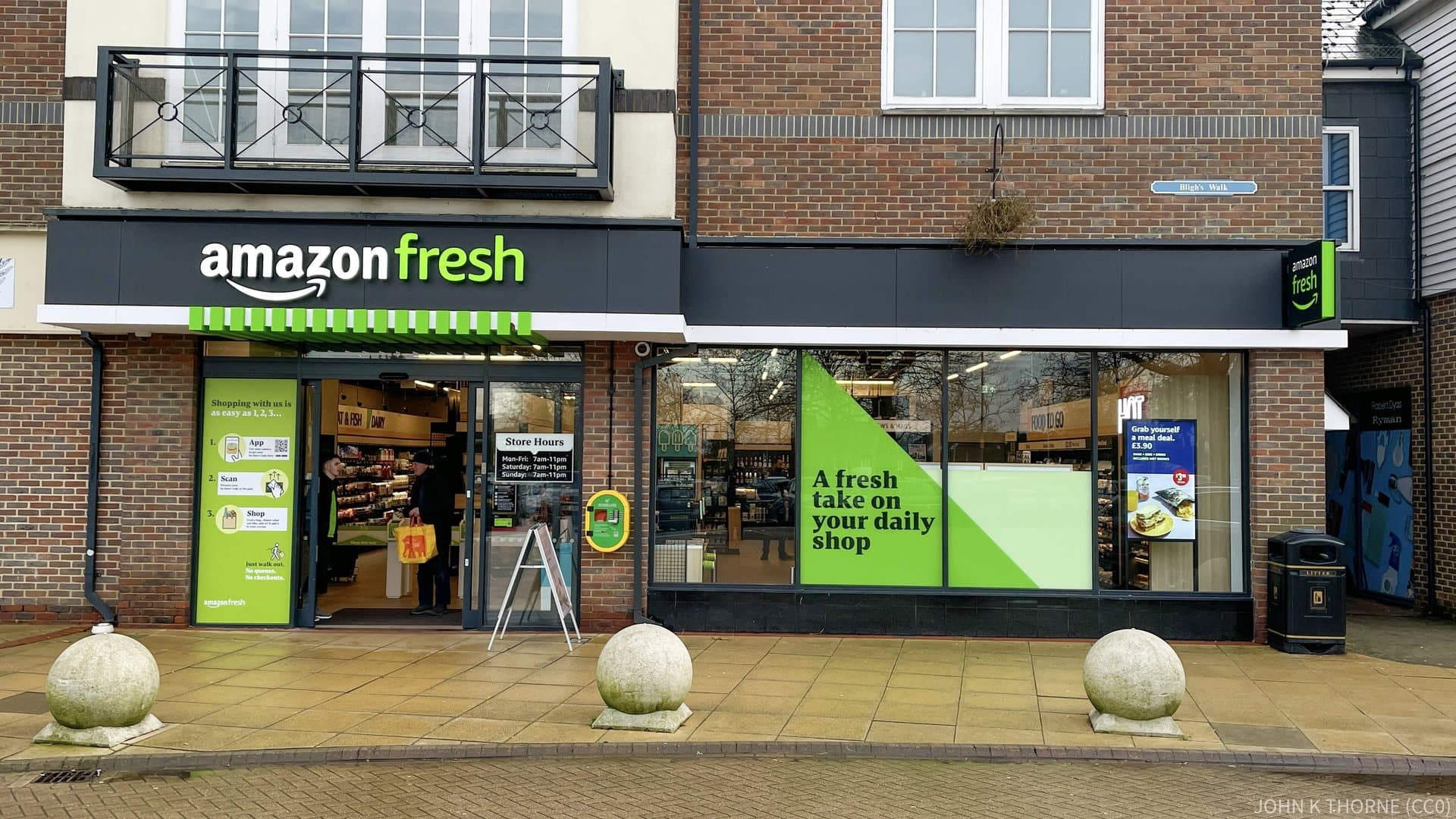Amazon’s UK Grocery Shift: 5 Insights on Online Delivery Growth
Explore Amazon’s evolving UK grocery strategy, from shuttered Fresh stores to online delivery expansion, revealing key lessons on retail challenges, supplier relations, and digital disruption in Britain’s food market.

Key Takeaways
- Amazon closed 19 UK Fresh stores in 2025, pivoting to online delivery.
- UK grocery market margins are razor-thin, challenging Amazon’s model.
- Supplier disputes and payment delays hurt Amazon’s UK grocery reputation.
- Amazon’s online grocery share in the UK remains below 1%.
- Partnerships with UK supermarkets fuel Amazon’s growing online grocery presence.

When Amazon launched its first cashier-free grocery store in west London in 2021, it seemed poised to revolutionize Britain’s $290 billion food market. Yet by 2025, the company closed 19 Amazon Fresh stores, signaling a strategic retreat from physical retail. This shift underscores the fierce competition and razor-thin margins defining UK grocery retail.
Despite these setbacks, Amazon isn’t exiting the UK grocery scene—it’s doubling down on online delivery, partnering with established supermarkets like Morrisons and the Co-op. This recalibration reveals the complexities of transplanting a global retail giant’s model into Britain’s unique food landscape.
In this article, we unpack five key insights from Amazon’s UK grocery journey, exploring what it means for shoppers, suppliers, and the future of online grocery delivery in Britain.
Closing Physical Stores
Amazon’s decision to shutter 19 Amazon Fresh stores in Britain by 2025 surprised many who saw the cashier-free concept as a game-changer. The west London store that opened in 2021 was the first outside the U.S., symbolizing Amazon’s bold grocery ambitions. But the reality of UK food retail proved tougher than expected.
Margins in British grocery are notoriously slim—often under 5%—and building scale is expensive. A former UK grocery CEO noted that Amazon’s expertise in general merchandise didn’t translate easily to food retail, which demands specialist logistics and systems. The timing didn’t help either; launching during a cost-of-living crisis meant shoppers prioritized savings over tech novelties like checkout-free shopping.
This retreat from physical stores isn’t a failure but a recalibration. Amazon plans to convert five Fresh locations to the Whole Foods Market format by 2026, signaling a shift toward premium grocery experiences rather than mass-market disruption.
Supplier Struggles
Behind the scenes, Amazon’s relationship with UK grocery suppliers has been rocky. Unlike traditional retailers who conduct thorough checks on deliveries, Amazon relies heavily on automated product recognition. This approach has led to frequent disputes over quantities received, causing delayed or incomplete payments.
The industry regulator has ranked Amazon Britain’s worst-performing grocer for supplier code compliance since 2022, and investigations into payment delays are ongoing. Suppliers describe communication challenges and a lack of collaboration, contrasting sharply with the cooperative culture typical in UK grocery trade.
These supplier tensions highlight that retail success isn’t just about technology or scale—it’s also about trust and smooth partnerships. Amazon has pledged to improve compliance, but the damage to its grocery reputation lingers.
Online Delivery Expansion
While physical stores faltered, Amazon’s online grocery presence in the UK has quietly grown. In 2025, nearly a third of all Amazon.co.uk units sold were grocery essentials like eggs, baby wipes, and toilet roll. This shift reflects changing consumer habits and Amazon’s strength in e-commerce.
Amazon plans to expand same-day delivery of perishable groceries through its main site and partnerships with Morrisons, the Co-op, Iceland, and rapid delivery firm Gopuff. This model lets Amazon earn commissions without bearing fulfilment costs, making it more profitable than running physical stores.
PwC’s Strategy& report projects that by 2030, over 25% of UK food spending will be online. Though some analysts find this optimistic, Amazon’s investments in AI-driven inventory and rapid delivery position it well to ride this wave.
Competitive UK Market
The UK grocery market is a battlefield dominated by household names. Tesco leads with a 28.4% market share, followed by Sainsbury’s at 15.1%, and discounters Aldi and Lidl combining for 18.9%. These players have deep roots and finely tuned operations.
Amazon’s stock market value dwarfs Tesco’s by over 60 times, yet its UK grocery market share remains below 1%. This gap underscores the challenge of entering a mature, fiercely competitive market where volume and tight margins reign.
Past giants like Walmart struggled with Asda, eventually selling it after failing to crack the UK code. Amazon’s experience echoes this, showing that global retail power doesn’t guarantee local grocery success.
Adapting to British Shoppers
British consumers have shown loyalty to traditional supermarket formats and in-person shopping experiences. Amazon’s push for checkout-free stores clashed with shoppers’ focus on value during a cost-of-living crunch.
The company’s initial gamble on automated retail didn’t resonate as hoped. Instead, shoppers leaned into online convenience for essentials, a trend Amazon is now embracing fully.
This story reminds us that innovation must meet customers where they are. The best tech can’t replace understanding local tastes, habits, and economic realities. Amazon’s UK grocery pivot is a testament to learning and evolving in a complex market.
Long Story Short
Amazon’s UK grocery story is a lesson in adaptation and resilience. The closure of Amazon Fresh stores reflects the brutal economics of British food retail, where margins under 5% and entrenched competitors like Tesco dominate. Supplier tensions and cultural missteps further complicated Amazon’s physical store ambitions. Yet, the company’s pivot to online delivery signals a strategic embrace of Britain’s evolving shopping habits. With plans to expand same-day delivery of perishables and deepen supermarket partnerships, Amazon aims to capture a growing slice of the online grocery pie—projected by PwC to reach 25% of food spending by 2030. For consumers and industry watchers alike, Amazon’s journey highlights that digital disruption in grocery isn’t a straight line. It’s a dance between innovation, local nuances, and relentless competition. The future belongs to those who blend technology with an understanding of what British shoppers truly want.